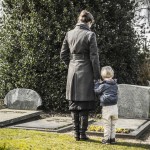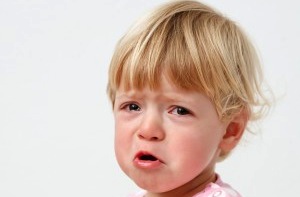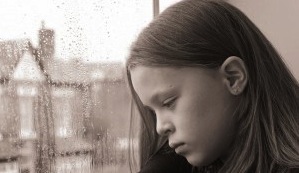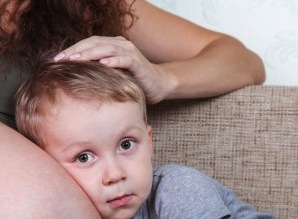
Psychotic disorders, such as schizophrenia, are often conceptualised as arising from a complex interplay of genetic and environmental influences (Tandon 2008). The impact of social influences on the risk of psychotic experience is undeniable. Recent reviews of this topic have called for a focus on maternal wellbeing as a means of primary prevention for mental disorder (Lewis 2014).
Much early neural development occurs during the time before birth however. During this time the child is likely sensitive to the mother’s health and wellbeing. How then do psychological stresses during pregnancy affect the child’s later development? Some studies have demonstrated an increased risk of conditions such as ADHD, Autism spectrum and mood disorders following maternal psychological stress during pregnancy (Khashan et al 2011, Class et al 2013). The findings of such studies have not been entirely consistent however and have not been able to assess influences such as the relationship of the bereaved to the deceased, or the manner of the deceased’s demise.
Abel and colleagues (2014) sought to explore the association between bereavement for mothers during pregnancy, or for children during early life and the subsequent risk of psychosis in later life. They also wanted to assess the impact of the death of nuclear (parents and siblings) versus extended (grandparents, aunts, uncles) family members. Finally they looked to understand whether the method of death (suicide, accidental or natural causes) was important to risk.
Methods
The authors used Swedish national registers relating to birth, deaths and hospital admission. Each Swedish citizen is assigned a unique identifying number that can be used to trace them through the varying databases, including healthcare related admissions. The use of Scandinavian population databases in epidemiological trials is well established. The comprehensive nature of these databases have provided a valuable resource for various research teams.

This blog reports on a cohort study, which assesses the impact of early life or prenatal bereavement on risk of subsequent psychotic diagnosis
Cases
To ascertain the presence of psychotic disorder, inpatient admissions were identified associated with specific diagnostic codes (e.g ICD-10 F25 for schizophrenia). Identified cases were then divided into three groups for analysis:
- Non-affective psychosis (e.g. schizophrenia)
- Affective psychosis (e.g bipolar affective disorder or depressive disorder with psychotic symptoms)
- All psychoses
Exposure to bereavement
Preconception and prenatal exposure to bereavement was classed as the death of the mother’s parents, a child or the biological father of her expected child. For the child (obviously following birth) an exposure could include the death of their mother.
Bereavements were defined as being nuclear family (mother’s partner, siblings or the mother herself postnatally) and extended family (mother’s parents).
Bereavement exposures were divided by time period:
- Preconception (up to 6 months before conception)
- First trimester (0 – 12 weeks)
- Second trimester (13 – 24 weeks)
- Third trimester (24 weeks – birth)
- Postnatal period (0 – 2.9 years)
- Postnatal period (3 – 6.9 years
- Postnatal period (7 – 12.9 years)
To account for any possible delay between bereavement and onset of psychosis, those exposed between the age of 13 and 20 were excluded from the study.
Statistical analysis and confounders
Logistic regression was used in order to estimate crude and adjusted odds ratios (the chance of developing psychosis following bereavement vs no bereavement – then adjusting for identified confounders).
A second analysis was then performed assessing the type of bereavement – nuclear vs non-nuclear and any differences in impact. Finally for a subgroup (post-natal exposure) the impact from manner of death (suicide, accidental or natural causes) was also assessed.
The confounders assessed by the authors were comprehensive, addressing a wide range of factors known to be associated with the risk of mental disorder. Overall the methods used appear to be of high quality, suggesting that emergent findings should be reliable.
Results
- Overall any bereavement in the prenatal or postnatal period was associated with an increased risk of psychosis
- (OR (Odds Ratio) = 1.24 (95% CI (Confidence Interval) 1.17 to 1.32)
- Maternal bereavement during pregnancy was not associated with an increased risk of psychosis
- The risk of developing a non-affective psychosis was increased by bereavement in childhood
- OR range = 1.12 to 1.23 (95% CI range 1.02 to 1.38)
- The risk of developing affective psychosis was increased only by bereavement within the 7 – 12.9 age window
- OR = 1.17 (95% CI 1.02 to 1.34)
- Death within the nuclear family did not raise risk of psychosis after antenatal exposure
- Nuclear family bereavement trended towards higher risk, the earlier the exposure occurred
- Death by suicide trended towards higher risks than death by accident, which were also greater than death by natural causes
- Again, larger risk estimates were observed for bereavement following suicide in earlier life

This well conducted study identified a clear increased risk of developing psychosis following bereavement during childhood
Conclusion
The authors concluded:
Postnatal but not prenatal bereavement stress in mothers is associated with an increased risk of psychosis in offspring. Risks are especially high for affective psychosis after suicide in the nuclear family, an effect that is not explained by family psychiatric history. Future studies are needed to understand possible sources of risk and resilience so that structures can be put in place to support vulnerable children and their families.
Summing up
The authors identified a clear increased risk of developing psychosis following bereavement during childhood. This risk appeared to be greater following the death of a nuclear family member, if the death occurred during earlier childhood and if the death followed suicide or accident.
The authors’ finding that maternal exposure to bereavement during pregnancy was not associated with increased psychosis risk was inconsistent with previous studies that had found increased risk of mood disorders and developmental conditions such as autistic spectrum disorder and ADHD following psychological stress during pregnancy (Khashan et al 2011, Class et al 2013). The authors suggest this discrepancy may relate to differences in the nature of disorder between psychotic disorders and developmental or affective disorders. Of interest the study by Khasan and colleagues identified increased risk of affective disorders in boys only.
The greater impact of early life bereavement can be accounted for, the authors suggest, by the greater impact of early life experience on brain development. This study can say nothing relating to the mechanisms of such impact however.
Bereavement, while always a tragedy, affects us all differently. For example the death of an elderly relative following a protracted illness will affect us in a different way to the death of a younger sibling. The manner in which we grieve following bereavement, and the impact of this on us is difficult to gauge through epidemiological studies alone.
The authors end by highlighting the complexity of the interactions between childhood development and bereavement stress. As always – more research to further elucidate these mechanisms is most definitely needed.

This study found no link between maternal bereavement during pregnancy and increased psychosis risk in the offspring
Links
Abel, K. M., Heuvelman, H. P., Jorgensen, L., Magnusson, C., Wicks, S., Susser, E., et al. (2014). Severe bereavement stress during the prenatal and childhood periods and risk of psychosis in later life: population based cohort study. BMJ, 348(jan21 2), f7679–f7679. doi:10.1136/bmj.f7679
Tandon, R., Keshavan, M. S., & Nasrallah, H. A. (2008). Schizophrenia, “Just the Facts” What we know in 2008. 2. Epidemiology and etiology. Schizophrenia Research, 102(1-3), 1–18. doi:10.1016/j.schres.2008.04.011
Lewis, A. J., Galbally, M., Gannon, T., & Symeonides, C. (2014). Early life programming as a target for prevention of child and adolescent mental disorders. BMC Medicine, 12(1), 33. doi:10.1186/1741-7015-12-33
Khashan, A. S., McNamee, R., Henriksen, T. B., Pedersen, M. G., Kenny, L. C., Abel, K. M., & Mortensen, P. B. (2011). Risk of affective disorders following prenatal exposure to severe life events: A Danish population-based cohort study. Journal of Psychiatric Research, 45(7), 879–885. doi:10.1016/j.jpsychires.2010.12.005
Class, Q. A., Abel, K. M., Khashan, A. S., Rickert, M. E., Dalman, C., Larsson, H., et al. (2013). Offspring psychopathology following preconception, prenatal and postnatal maternal bereavement stress. Psychological Medicine, 44(01), 71–84. doi:10.1017/S0033291713000780


Bereavement during childhood, but not before birth, is associated with an increased risk of psychosis: Psychot… http://t.co/AmxiZwfQAA
This: RT @Mental_Elf: Bereavement during childhood, but not before birth, associated with increased risk of psychosis http://t.co/sEXqpTpEOx
@shrinking81 summarises a @BMJ_latest cohort study on severe bereavement stress and the risk of psychosis http://t.co/I4OE1E00Bf
Mental Elf: Bereavement during childhood, but not before birth, is associated with an increased risk of psychosis http://t.co/7KoIi8KWZd
Hi @Rethink_ Interested in your thoughts on our blog about #bereavement and #psychosis http://t.co/I4OE1E00Bf
Maternal bereavement during pregnancy was not associated with an increased risk of psychosis in their offspring http://t.co/I4OE1E00Bf
The risk of developing a non-affective psychosis is increased by bereavement in childhood http://t.co/I4OE1E00Bf
RT @Mental_Elf: The risk of developing affective psychosis is increased by bereavement between the ages of 7 and 13 http://t.co/I4OE1E00Bf
Don’t miss: Bereavement during childhood, but not before birth, is associated with an increased risk of psychosis http://t.co/I4OE1E00Bf
Bereavement during childhood, but not before birth, is associated with an increased risk of psychosis http://t.co/6rwPvatKX1 via @sharethis
Increased risk of psychosis after bereavement during childhood esp. death of family member, by suicide or accident. http://t.co/g6Yne6xqsN
Bereavement during childhood, but not before birth, is associated with an increased risk of psychosis The Mental Elf http://t.co/WIlJiUw3wE
[…] the Mental Elf has blogged previously about the impact of childhood bereavement on mental health, the impact of bereavement on the health of older people can be even more severe, given the ongoing […]